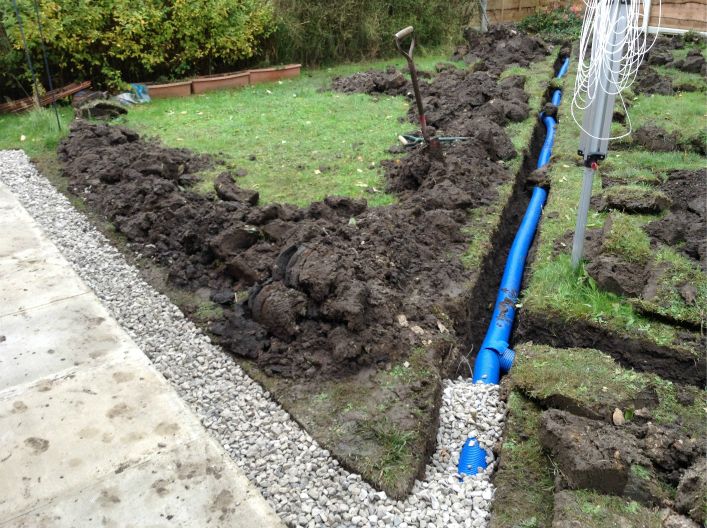There are several different types of driveway drainage systems. Some of them are Channel drains, Slot drains, French drains, and Swales. Using the right one will improve the overall look of your driveway and make it safer for pedestrians and drivers. Learn more about each type and how to find one that best fits your needs.
Channel drains
Channel drains are gratings made from a variety of materials. Some are made from concrete or plastic. They are strong and lightweight, but also resistant to chemicals. If you’re planning to use a channel drain in your driveway, it’s important to choose the right material. In general, grates made from class B and class C materials are best, as they won’t break down or warp even under heavy traffic. Avoid using inferior grades, though, because they may not last long and might even cause problems down the line.
The most important feature of channel drains is the ability to handle heavy water. They are designed to reduce the amount of water that collects on your driveway. They can support up to 12.5 tonnes of weight. They are also designed with a metal grating, which lets water run off and distribute it to a suitable collection point. The best place to install a channel drain for your driveway is at a low point in the surface.
Slot drains
Slot drains are one of the most versatile surface drainage systems. They don’t require any grating and can be easily cleaned with a hose. They also don’t absorb water, so any contaminants are easily disposed of in an environmentally friendly manner. Slot drains can also be equipped with flush valves so that they can be easily flushed with water. These valves can be set on timers or operated manually.
Trench drains have long been the standard drainage solution, but if you are considering a landscaping design, slot drains may be a better option. They are not only more cost effective, but they are more durable and sanitary than conventional grates. Plus, they can be used in structural and hollow-core slabs.
French drains
Before you install French drains for driveway drainage, you should decide where they will be installed. The best location will depend on the areas where water collects, the surrounding elevation, and the condition of the soil. If you are unsure of the best location for the drain, consult an installer. The best location will fit the needs of your property and will be determined by the designer and installer.
Once you have decided on the location of the drain, you can start installing it. Place drain pipes six inches below the surface of the driveway. Install the channel drains in a concrete trench, preferably at a slight downward slope. You should then cover the channel drain with soil and place flat stones around the end to prevent erosion.
Swales
Swales are an effective way to capture rainwater. Eco-minded homeowners in more rainy regions often use them as part of their landscaping, directing water to flower gardens and reducing runoff. They also help to trap silt and pollutants. Swales can also be used as an attractive landscape feature.
Swales are also ideal for improving driveway drainage. They can be built into the edge of a driveway or installed alongside it. However, if the driveway is made of concrete, channel drains or trench drains should be used. In this case, the trench drain can be added to either side of the driveway.
Stainless steel
If you want a durable, attractive drainage system for your driveway, consider a stainless steel trench drain. These products are available in several different sizes and shapes. Many of them come in a wide variety of colors and come with different options for grating. This material is rust and corrosion resistant, making it the ideal choice for many applications.
Driveway drainage is vital for proper water runoff control. A variety of options are available for new and existing driveways, and you can even get a driveway drainage system designed for heavy-duty applications.
Porous driveway materials
Porous driveway materials are a great option for a driveway that has to deal with water issues. Unlike regular concrete, these materials have holes in them which allow water to percolate through and drain off. The same goes for asphalt or gravel driveways. Resin-bound materials are also an excellent option for drainage. They are durable and can last for 30 years or more. Another popular option is to use different types of materials in different areas. This way, water can drain away to a lawned area or into a soakaway.
Permeable driveways can be installed in front gardens as well as back gardens. These types of materials do not require planning permission and can be installed very quickly. The only downside is that they can lead to permanent puddles, which can be dangerous if they freeze over.

